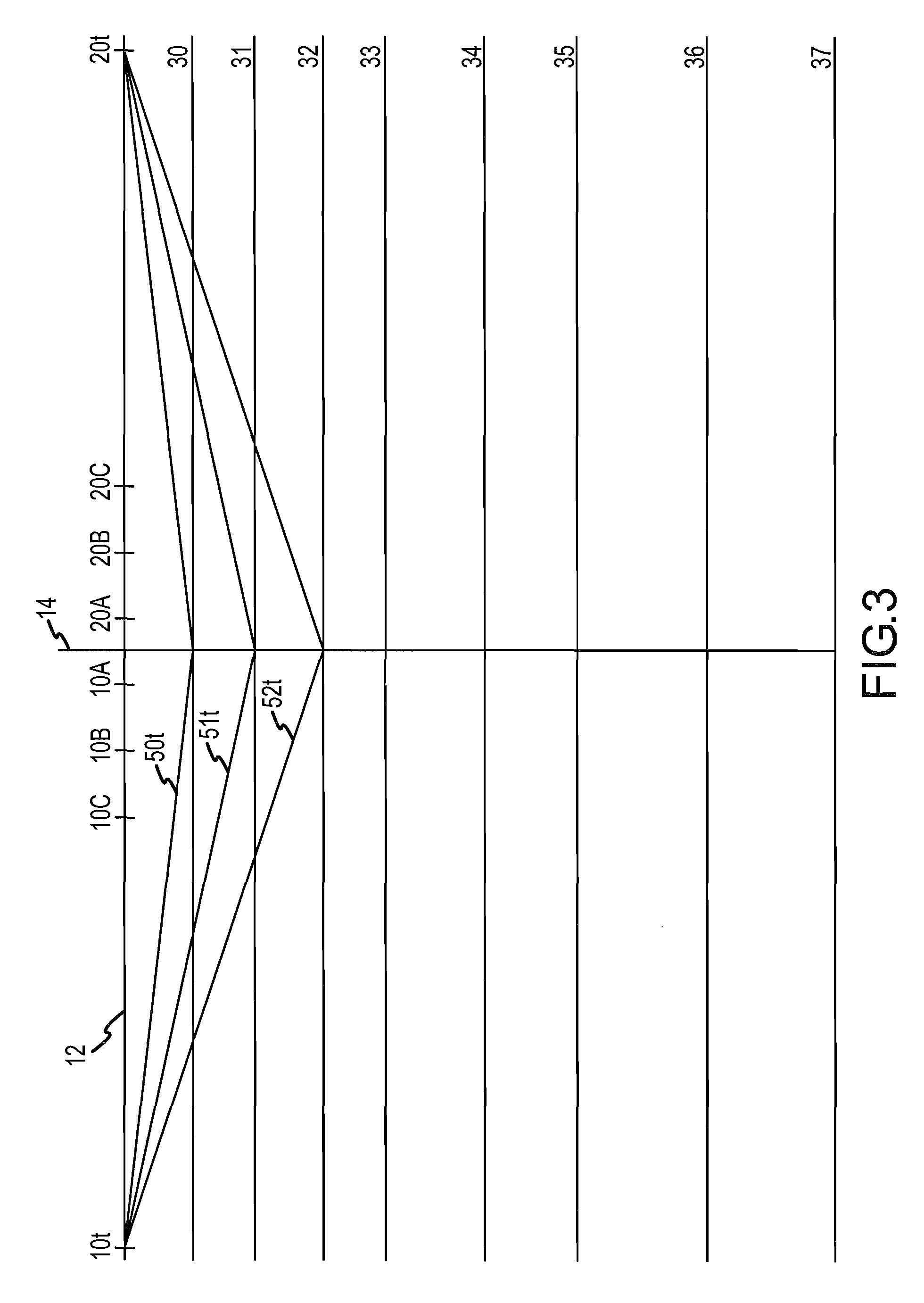Stretch free trace processing using block move sum and phase-based move out corrected data
a technology of move sum and block move, applied in the field of seismic trace data processing, can solve the problems of stretching or time widening of certain pulses, affecting the frequency content affecting the accuracy of seismic trace data, so as to reduce or substantially eliminate the effect of stretching, improving accuracy, and reducing distortion
- Summary
- Abstract
- Description
- Claims
- Application Information
AI Technical Summary
Benefits of technology
Problems solved by technology
Method used
Image
Examples
Embodiment Construction
[0037] Two fundamental problems exist with NMO which are usually dealt with by zeroing out (i.e., muting) the regions of affected data:
[0038] 1. Events that cross at non-near or far offsets; and
[0039] 2. NMO stretch.
[0040] The present invention provides a process that solves both problems without resorting to muting data at the far offsets. The system of the present invention can output the stack trace or the moveout corrected traces from a set of non-NMO corrected gather traces. The system generally involves two processes; 1) defining a zero offset trace and 2) phase-based moveout to zero offset. Each of these is described in turn below.
I. Zero Offset Trace
[0041]FIGS. 1 and 2 illustrate seismic traces having a common midpoint, move out correction of the traces and stacking of the traces to provide enhanced signal to noise ratio of reflections or ‘events’ within the traces. More specifically, a number of seismic sound sources 10a, 10b and 10c are provided at or below the earth...
PUM
 Login to View More
Login to View More Abstract
Description
Claims
Application Information
 Login to View More
Login to View More - R&D
- Intellectual Property
- Life Sciences
- Materials
- Tech Scout
- Unparalleled Data Quality
- Higher Quality Content
- 60% Fewer Hallucinations
Browse by: Latest US Patents, China's latest patents, Technical Efficacy Thesaurus, Application Domain, Technology Topic, Popular Technical Reports.
© 2025 PatSnap. All rights reserved.Legal|Privacy policy|Modern Slavery Act Transparency Statement|Sitemap|About US| Contact US: help@patsnap.com



